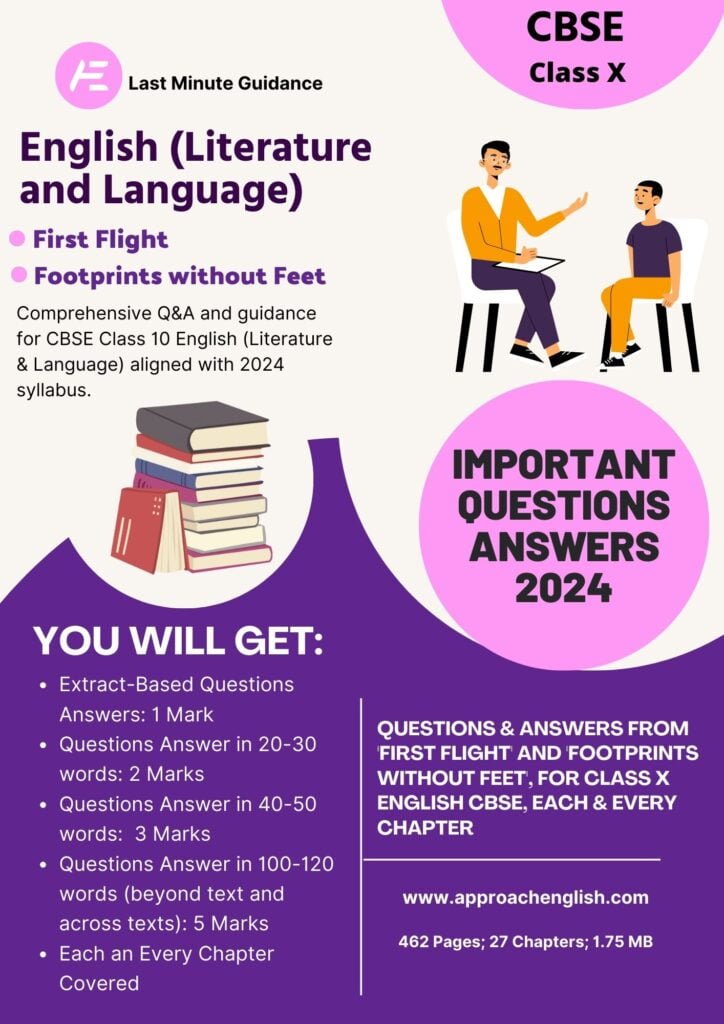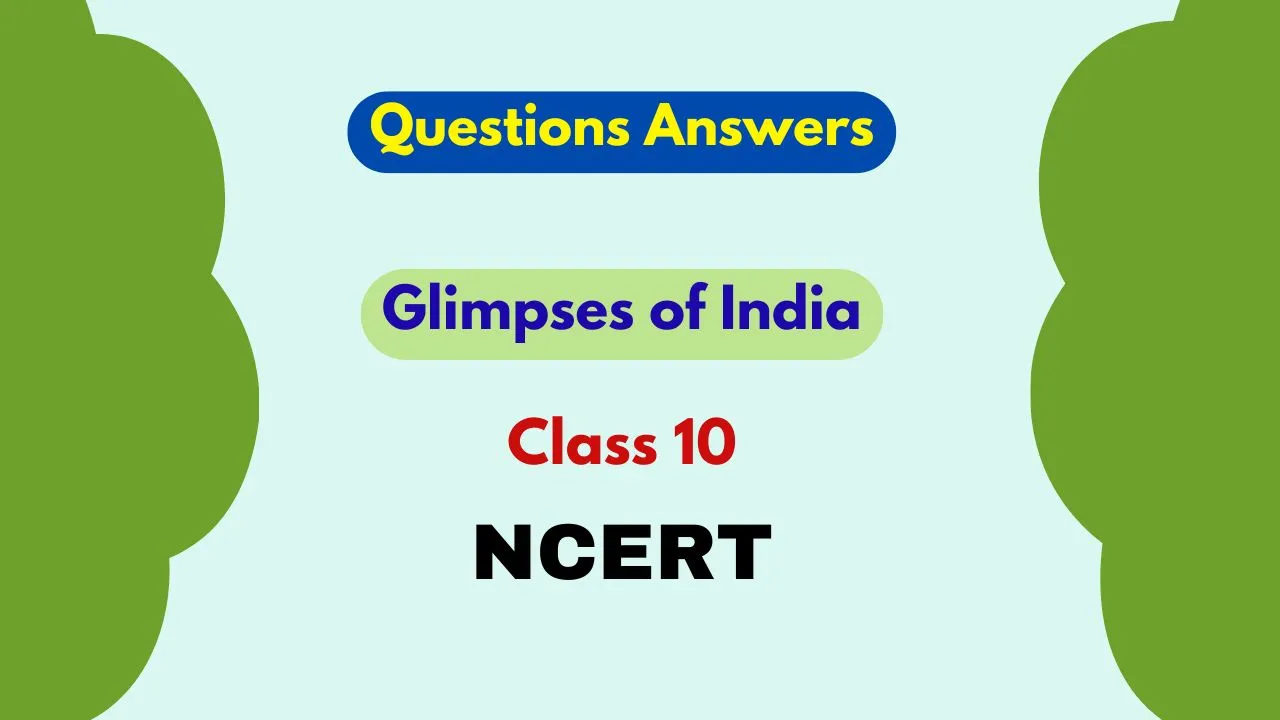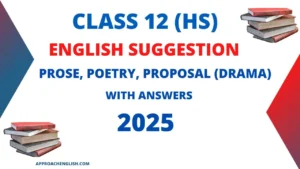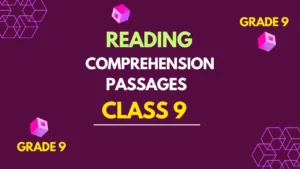Important Glimpses of India Class 10 Questions Answers are provided here for the students of class 10 of the CBSE board in 2024. Varieties of questions Answers from Glimpses of India Class 10 have been arranged according to the latest question types prescribed by NCERT.
Glimpses of India Class 10 Questions Answers consists of three parts: A Baker from Goa, Coorg, and Tea from Assam.
Q3 Glimpses of India Class 10 Questions Answers Extract Based MCQ.
Glimpses of India Class 10 Questions Answers Extract Based 1
Read the following extracts carefully and choose the correct option.
(A) “Our elders are often heard reminiscing nostalgically about those good old Portuguese days, the Portuguese and their famous loaves of bread. Those eaters might have vanished but the makers are still there. We still have amongst us the mixers, the moulders and those who bake the loaves. Those age-old, time-tested furnaces still exist. The fire in these furnaces has not yet been extinguished. The thud and jingle of traditional baker’s bamboo, heralding his arrival in the morning, can still be heard in some places. ”
i The narrator says that the furnaces were ‘time-tested’ because
e) they had been thoroughly tested each time, before being used.
f) they had proved the test of time and were working well.
g) they had been tested by modern day experts.
h) they had the power to withstand inexperienced usage.
Ans: b) they had proved the test of time and were working well
CBSE Class 10 English (Literature and Language) Questions Answers pdf 2024
Suggestive Sample Question Answers Papers pdf 2024 for Class X English (First Flight and Footprints without Feet), tailored to the 2023-24 syllabus, serve as essential preparation material for the upcoming CBSE board exam, aiding students in comprehensive understanding and practice.

ii Those eaters might have vanished but the makers are still there. Pick the option that expresses the tone of the narrator.
1) elated
2) morose
3) nostalgic
4) hopeful
5) sarcastic
6) critical
7) celebratory
a) 1 and 7
b) 2 and 6
c) 3 and 4
d) 4 and 5
Ans: c) elated
People also ask
iii Pick the idiom that brings out the same meaning of ‘reminiscing’ as used in the passage
a) train of thought.
b) commit something to memory.
c) a trip down memory lane.
d) jog somebody’s memory.
Ans: c) a trip down memory lane
iv Why do you think the baker came in with ‘a thud and a jingle’?
a) He wanted to make everyone alert and active with his presence.
b) He wanted to wake up everyone from their slumber and ask them to 27 visit the bakery.
c) He was used to making a loud noise as most people responded to just that.
d) He wanted to make people aware that he had come around to sell his goodies.
Ans: d) He wanted to make people aware that he has around to sell his goodies.
v The ‘fire in the furnaces has not yet been extinguished’ implies that
e) the furnaces are still being used to bake the loaves of bread.
f) The fire is in the process of being reviewed as a replaceable method for heating furnaces.
g) The furnaces are very strong and cannot be shifted for use in other areas.
h) The fire in the furnaces takes a long time to cease burning, once lighted.
Ans: a) loaves of bread are still baked in the furnaces.
Glimpses of India Class 10 Questions Answers Extract Based 2
Read the following extracts carefully and choose the correct option.
(B) “Tell me another!” scoffed Pranjol.
“We have an Indian legend too. Bodhidharma, an ancient Buddhist ascetic, cut off his eyelids because he felt sleepy during meditations. Ten tea plants grew out of the eyelids. The leaves of these plants when put in hot water and drunk, banished sleep.”
“Tea was first drunk in China,’’ Rajvir added, ‘‘as far back as 2700 B.C.! In fact, words such as tea, chai and chini are from the Chinese. Tea came to Europe only in the sixteenth century and was drunk more as medicine than as beverage.”
i The main idea of this extract is
a) Tea as a popular beverage in Europe and how it spread.
b) Origin of tea in India and why it became popular in Europe.
c) Importance of India in popularising tea and influencing Europe.
d) Indian legend on tea and how it travelled from China to Europe.
Ans: d) Indian legend on tea and how it travelled from China to Europe.
ii Why do you think Pranjol ‘scoffed’?
a) He was upset with the legend Rajvir shared.
b) He was mocking Rajvir for his lack of knowledge.
c) He was amused and tickled at what Rajvir shared.
d) He was impressed with what Rajvir had shared.
Ans: c) He was amused and tickled at what Rajvir shared.
Related topics
| A Baker from Goa Class 10 Questions Answers |
| Coorg Class 10 Questions Answers |
| Tea from Assam Class 10 Questions and Answers |
iii Pick the option that includes the tea label information that corresponds to the given sentence.
“The leaves of these plants when put in hot water and drunk, banished sleep.”
a) Option 1
b) Option 2
c) Option 3
d) Option 4
Ans: c) Option 3
iv Based on the inference from the extract, which of these is NOT TRUE about tea drinking in the sixteenth century Europe? Dr. Smith is a doctor of sixteenth century Europe.
a) Dr. Smith encouraged drinking of green tea whenever available, to reduce chances of tooth loss.
b) Dr. Smith prescribed regular tea drinking to all his patients with a weak heart.
c) Dr. Smith always served tea as refreshment when he has guests, as they all enjoyed this beverage.
d) Dr. Smith usually recommended black tea to reduce inflammation in the body.
Ans: c) Dr. Smith always serves tea as refreshment when he has guests, as they all enjoy this beverage.
v Based on this extract, how do you think Rajvir felt while narrating?
a) i) excited ii) agitated
b) i) hysterical ii) nervous
c) i) nervous ii) agitated
d) i) enthusiastic ii) passionate
Ans: d) i) enthusiastic ii) passionate
Q10 Glimpses of India Class 10 Questions Answers in 20-30 words
Ans: The author in ‘Coorg’ suggests that visitors searching for India’s essence should explore Coorg due to its serene landscapes, rich cultural heritage, and warm hospitality. Coorg encapsulates a blend of tradition, natural beauty, and the spirit of Indian culture, making it a quintessential representation of the country’s soul.
ii How did the baker become synonymous with celebrations and occasions in Goa?
Ans: The baker in Goa gained significance in celebrations by crafting delectable bread known as ‘pao,’ integral to local festivities. Offering diverse bread types and Christmas sweets, the baker became inseparable from occasions. Their aromatic, freshly baked goods symbolize tradition, unity, and the essence of joyous gatherings in Goan culture.
iii Do adventure sports like river rafting and rock climbing require a person to possess just physical strength? Why/Why not?
Ans: strength. These activities rely on technique, agility, mental focus, and teamwork. Skills such as balance, coordination, problem-solving, and endurance are crucial, making these sports a blend of physical prowess and mental aptitude for success and safety.
iv Pranjol buried his head in his detective book while Rajvir was eager to look at the beautiful scenery during the train journey. Why was there a difference in their attitude?
Ans: Pranjol’s immersion in the detective book suggests his preference for mental engagement or escapism, whereas Rajvir’s focus on the scenery reflects an appreciation for the moment and surroundings. Varied interests or personalities likely led to their contrasting attitudes—one seeking mental stimulation, the other embracing the beauty of the journey.
v Coorgis belong to a valorous and hospitable race. Comment on this statement with reference to the text.
Ans: The statement resonates with the portrayal of Coorgis in the text, highlighting their valor through historical accounts of bravery in battles and their hospitable nature evident in welcoming guests with warmth. Their rich culture emphasizes honor, bravery, and a generous spirit, validating the assertion about their valor and hospitality.
Q11 Glimpses of India Class 10 Questions Answers in 40-50 words
i Rajvir did his study before his visit to the tea plantation. Is it good to do one’s research before the start of a new venture or does it take away from the thrill of discovery? Elucidate your stance.
Ans: Doing research before a new venture offers valuable insights, enhancing the experience by providing context and understanding. It doesn’t diminish the thrill of discovery but rather enriches it by allowing a deeper appreciation of what’s encountered. Research complements exploration, providing a foundation for a more meaningful and informed discovery process.
ii Inspired by the diversity in the chapter, ‘Glimpses of India’, you wrote an article for your school magazine on the topic, ‘Diversity-the Uniqueness of India’. Write a paragraph, sharing two key opinions from the article.
Ans: The article celebrates India’s diversity, emphasizing its richness in culture and traditions. It highlights that diversity isn’t just about differences but a tapestry of unity. It advocates for embracing this uniqueness as a strength, fostering tolerance, understanding, and a sense of collective identity, making India truly exceptional amidst its varied tapestry.
iii The culture, lifestyle and traditions of a place are influenced by the people who lived or settled there at some point of time. Cultural assimilation adds flavour to the existing structure of a society. Summarise your opinion on the given idea.
Ans: The evolution of a society’s culture, lifestyle, and traditions owes much to the amalgamation of diverse influences from various settlers. Cultural assimilation enriches the societal fabric, infusing it with new flavors, perspectives, and practices. Embracing this diversity cultivates a vibrant, dynamic community, fostering growth, understanding, and an inclusive identity.
Q12 Glimpses of India Class 10 Questions Answers in 100-120 words (beyond text and across texts)
i Pen down a brief travelogue* entry, narrating any personal impression/s about a visit to Coorg. Include your reflections about the differences between the place where you live and the place you’ve visited. (* A travelogue is a person’s account of a journey to another country or place. It can either be a written report with many factual details or a narrative story about personal impressions and experiences.) You may begin like this… As I stepped into the land of evergreen forests, I was blown away by the pristine beauty and ………………………………(continue)
Ans: As I stepped into the land of evergreen forests, I was blown away by the pristine beauty and tranquility that enveloped Coorg. The lush greenery, misty mountains, and the aroma of coffee plantations painted a picture-perfect setting. What struck me most was the warmth of the Coorgi people—hospitable, proud of their heritage, and eager to share their culture. Contrasting this with my urban home, I realized the stark difference in pace and ambiance. Coorg’s serenity contrasted sharply with the bustling city life, offering a respite and a deeper connection to nature. The simplicity of daily life in Coorg felt refreshing, a departure from the fast-paced routine I’m accustomed to. This visit reminded me of the enriching harmony between nature, culture, and a more laid-back lifestyle.
a) What do you feel has changed now? Why?
b) State any one way, you feel, the paders can regain their lost glory.
Ans: a) The shift in consumer preferences and modernization has altered the dynamics of baking as a profession. With the advent of large-scale bakeries and the convenience of commercially produced goods, traditional paders face challenges in competing with mass-produced items. Additionally, changing dietary habits and health-conscious choices have influenced the demand for specific types of baked goods, impacting the traditional baker’s market.
b) To regain their lost glory, paders could focus on artisanal and specialty baked goods that highlight local flavors and traditional recipes. Emphasizing quality, authenticity, and the use of locally sourced ingredients can attract a niche market seeking unique and handmade products. Moreover, actively engaging with the community through workshops, promoting the cultural significance of their craft, and adapting to evolving consumer tastes could help revive the prestige of traditional paders in the baking industry.
iii In the chapter, ‘A Baker from Goa’ the narrator talks about his childhood in Goa and his fond memories. Compare the childhood of Nelson Mandela with that of the narrator.
Ans: In ‘A Baker from Goa’, the narrator recounts a more idyllic childhood in Goa, a place filled with family, cultural traditions, and communal bonds. Mandela’s upbringing was marked by racial discrimination, poverty, and segregation, while the narrator’s was marked by struggle and activism. The narrator’s memories are enriched by the flavors, aromas, and communal bonds of his hometown, highlighting the stark differences in their early lives shaped by diverse historical and societal contexts.
Extra Glimpses of India Class 10 Questions Answers
1. Who is the father of tea from Assam?
Ans: Maniram Dewan is often referred to as the “Father of Tea” in Assam. He played a pivotal role in initiating and promoting the cultivation of tea in the Assam region during the 19th century. Dewan’s efforts significantly contributed to the establishment and growth of the tea industry in Assam.
2. How many cups of tea did Pranjol ask?
Ans: Pranjol asked for two cups of tea.
3. Where did Pranjol’s father reside?
Ans: Pranjol’s father resided in the town of Jorhat in Assam.
3. What is the baker called Class 10?
Ans: The person who bakes bread, pastries, cakes, and other baked goods is commonly known as a “baker.” This individual is skilled in preparing dough, using different ingredients, and baking various types of products in an oven or other baking equipment.
4. What is a female baker called?
Ans: A female baker is also referred to as a “baker.” There isn’t a distinct term specifically for a female baker; the term “baker” is commonly used regardless of gender.
5. What is the baker called in God?
Ans: In some religious contexts, particularly in Christianity, the term “bread maker” or “bread provider” is occasionally used as a metaphorical representation of God. This is based on the biblical symbolism of bread as a source of sustenance and life, and in some theological interpretations, God is seen as the provider of spiritual nourishment, much like a baker provides bread for sustenance. However, this is a metaphorical or symbolic way of referencing God and not a literal title or name.
6. Which is the gateway to Coorg Class 10 answer?
Ans: The gateway to Coorg is primarily through the town of Mysore. Mysore serves as the main entry point to Coorg, also known as Kodagu, as it is well-connected by roadways and is in proximity to this picturesque hill station in Karnataka, India.
7. Who was Coorg Class 10?
Ans: Coorg, also known as Kodagu, is not a person; rather, it’s a district in the southwestern part of the state of Karnataka in India. It is renowned for its scenic beauty, coffee plantations, lush greenery, and distinct cultural heritage. Coorg has a rich history and was ruled by various dynasties before becoming a part of independent India. The region is predominantly inhabited by the Kodava people, who have their own unique traditions, language (Kodava Takk), and cultural practices. Coorg is famous for its natural beauty, including misty hills, rivers, waterfalls, and diverse flora and fauna, making it a popular tourist destination in India.
Related Search







